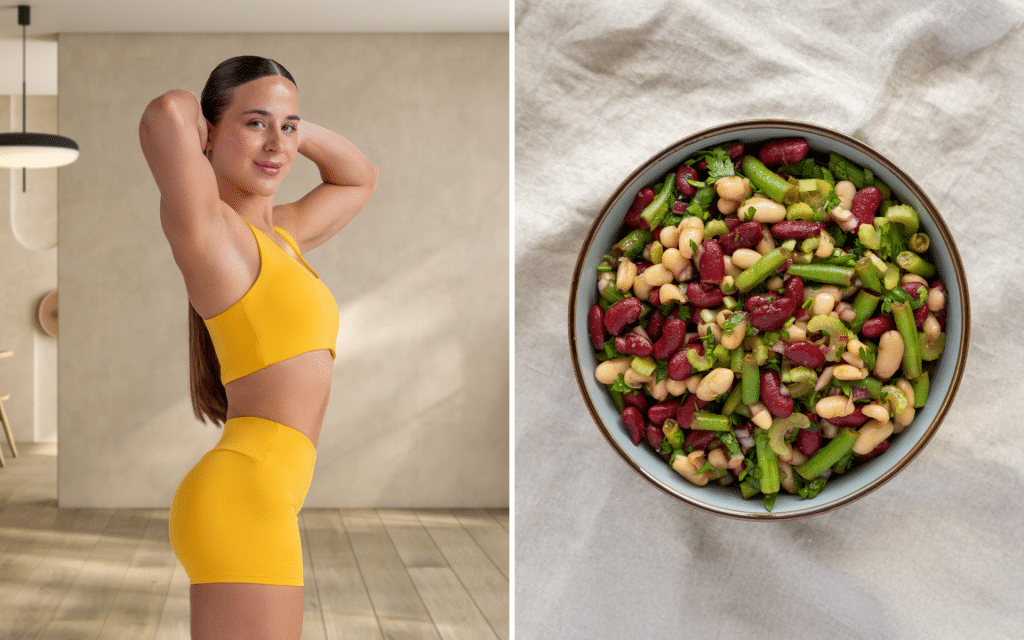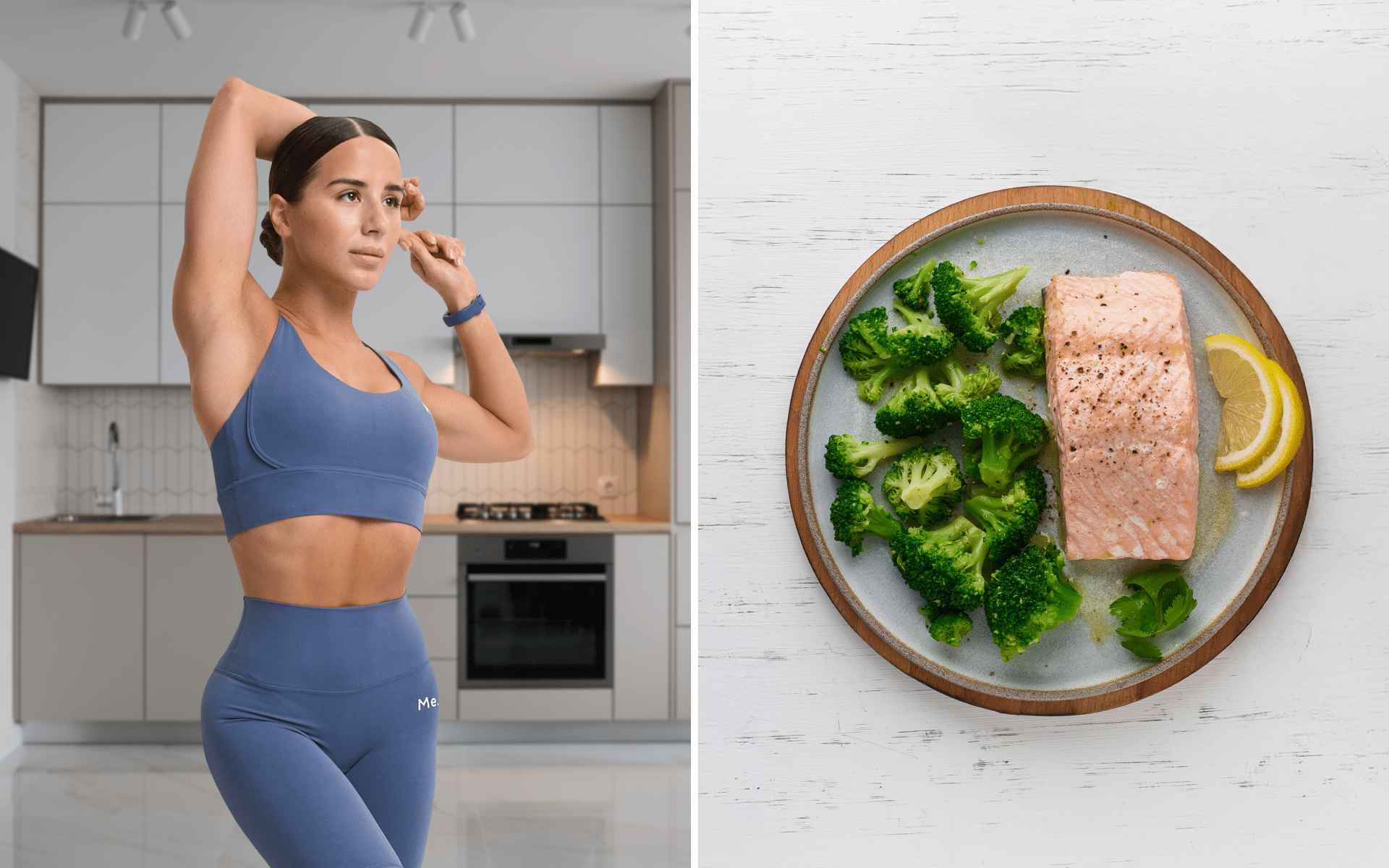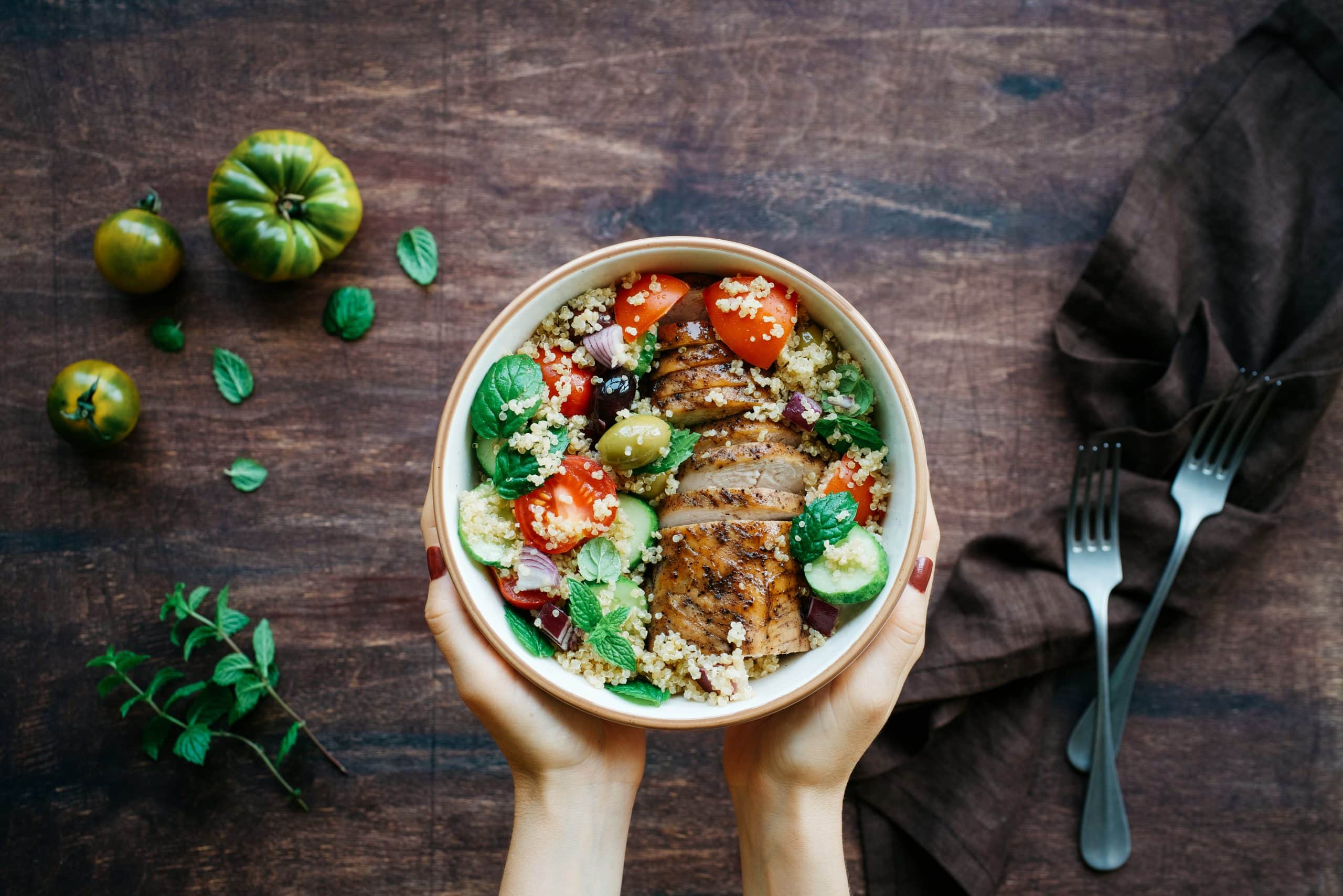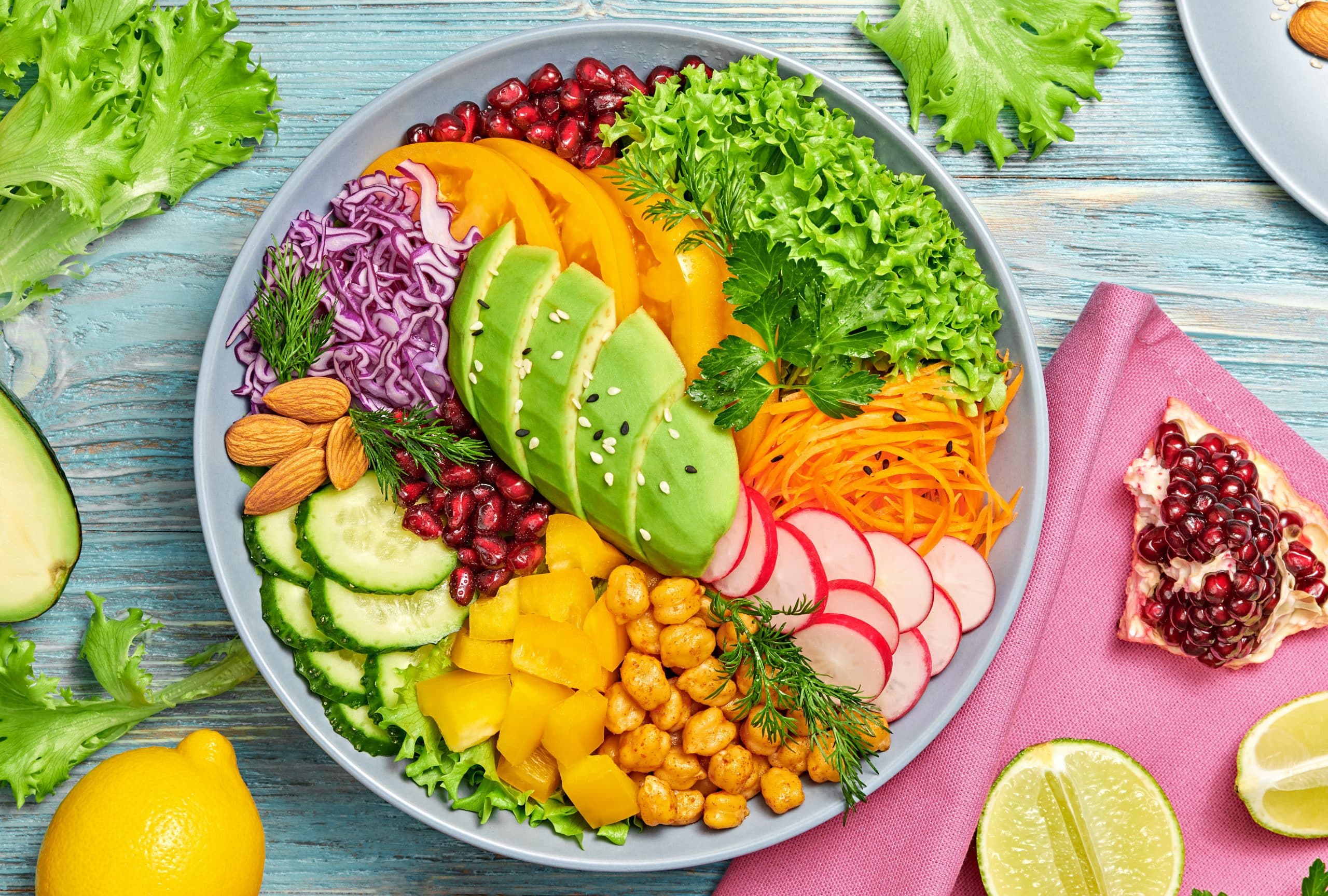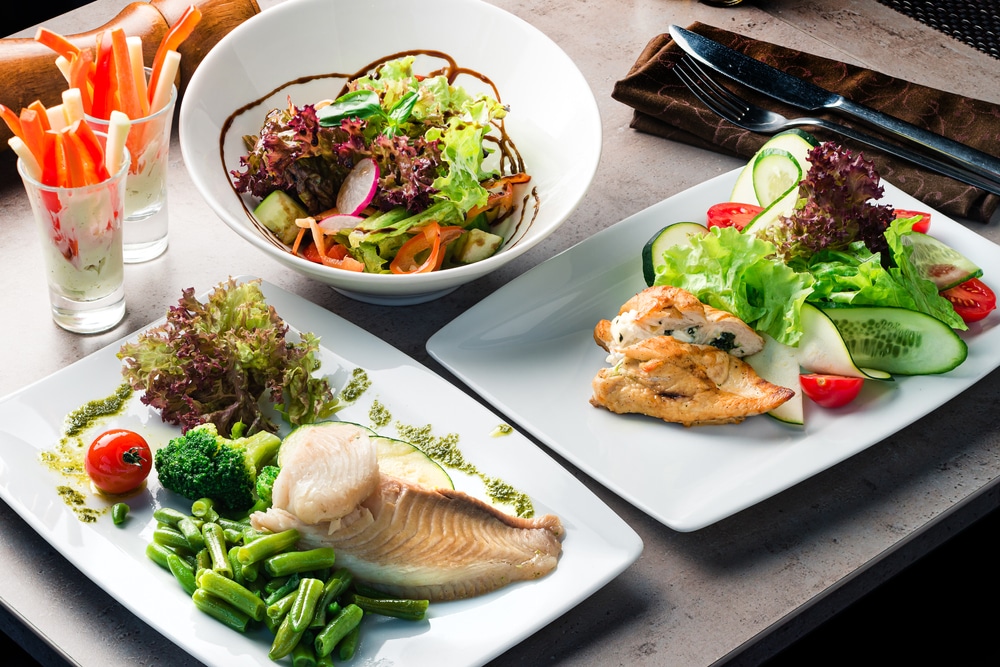What would happen if you focused your meals on how your ancestors ate? The paleo diet is a popular diet that focuses on the foods early humans ate.
If you’re curious about the paleo diet but with a low-carb approach, you’ve come to the right place.
Whether you’re looking to lose weight, improve your energy levels, or adopt a clean, nutrient-focused way of eating, this type of eating may be just right for you.
Here, we’ll cover all the essentials to help you get started on a low-carb paleo diet. We’ll explore what a low-carb paleo diet entails, its health benefits, a comprehensive food list, sample meal plans, and practical tips for success.
By the end, you’ll have all the tools you need to start your paleo journey and take your health and wellness to the next level.
What Is a Low-Carb Paleo Diet?
The low-carb paleo diet combines two nutritional approaches: the paleo diet and the low-carb diet.
The paleo diet is built around eating whole, unprocessed foods that our pre-agricultural ancestors would have consumed. Think lean meats, fish, vegetables, fruits, nuts, and seeds.
By limiting carbs, particularly high-carb foods such as grains, legumes, and starchy vegetables, the low-carb paleo approach aims to better regulate blood sugar levels, encourage fat burning, and promote more health benefits (1).
How many carbs you need will depend on your individual goals and needs. Some people get around 10-30% of their calories from carbs. So, while you limit your carb intake on a low-carb paleo diet, you can still have some throughout the day.
If you don’t know how many carbs you may need, make sure you consult a healthcare professional to get personalized guidance.
Another benefit of this diet is that it promotes nutrient-dense, minimally processed foods while avoiding modern agricultural products such as refined sugars, dairy, grains, and processed oils.
The result? A diet that’s packed with healthy fats, protein, and fiber but low in carbs, which makes it a powerful tool for many health goals.
What Is a Menu for a Low-Carb Paleo Diet?
Creating a menu for a low-carb paleo diet is easier than it may seem. The focus should be on combining nourishing protein, healthy fats, and low-carb vegetables.
Here’s a simple breakdown:
- Protein (wild-caught fish, grass-fed meats, pasture-raised poultry, eggs)
- Fats (avocado, coconut oil, olive oil, nuts, and seeds)
- Vegetables (non-starchy options such as broccoli, spinach, zucchini, and cauliflower)
- Fruits (small portions of low-sugar fruits such as berries)
As a recommendation, make sure there’s a protein source with every meal and then you can combine the rest of the foods.
For example, you can mix wild-caught fish (protein) with grilled avocado (healthy fats) and a side salad (vegetables). As long as you have a protein source at every meal, you can ensure a healthy and balanced plate.
Health Benefits of a Low-Carb Paleo Diet
One of the biggest reasons people switch to a low-carb paleo diet is the wide range of health benefits it offers. Here are some of the benefits you may see when following a low-carb paleo diet.
1. Weight Management
By reducing high-carb foods, such as bread and sugary snacks, your body is encouraged to burn fat for energy instead of glucose. This can lead to better weight management and fat loss.
However, studies have shown that it may not have as powerful an effect on weight loss as other strategies, such as intermittent fasting (3). Still, it can grant you amazing long-term results.
2. Improved Blood Sugar Levels
Reducing your carb intake helps stabilize blood sugar levels, which makes this diet particularly beneficial for people struggling with insulin resistance or type 2 diabetes (4).
BetterMe: Health Coaching app helps you achieve your body goals with ease and efficiency by helping to choose proper meal plans and effective workouts. Start using our app and you will see good results in a short time.
In addition, the carbs you can eat have a low glycemic index, which means they’ll provide more stable energy levels and lessen the impact on your blood sugar levels.
3. Heart Health
As the paleo diet focuses on healthy fats and lean proteins, it may help reduce LDL cholesterol levels (bad cholesterol) and improve overall cardiovascular health (2).
4. Reduced Food Cravings
Eating nutrient-dense foods keeps you feeling fuller for longer, which helps reduce the urge to snack on processed or sugary foods.
5. Better Digestion
Cutting out processed grains and dairy can reduce common digestive issues such as bloating, gas, and heartburn, which will help you feel better throughout the day!
Nutritional Guidelines and Paleo Diet Food List
You may still have some questions regarding the low-carb paleo diet, such as which foods you can or can’t eat. Here are the foods you’re allowed to eat and those you should avoid.
It’s important to keep in mind that how much of each food you need will depend on your individual goals and needs.
Foods You’re Allowed:
- Grass-fed proteins: Beef, chicken, pork, turkey, and wild-caught fish
- Healthy fats: Olive oil, coconut oil, avocado oil, nuts, and seeds
- Low-starch vegetables: Broccoli, cauliflower, kale, spinach, zucchini
- Low-sugar fruits: Berries, lemons, limes
- Beverages: Water, herbal teas, and black coffee (in moderation)
Foods You Must Avoid:
- Grains (wheat, rice, oats)
- Legumes (beans, peanuts, soy)
- Dairy (milk, cheese, butter)
- Sugary foods (sweets, pastries, sodas)
- Highly processed oils (canola, soybean oil)
Read more: Paleo Food List: What Are the Top Foods for the Ultimate Paleo Meal?
Paleo Diet 7-Day Meal Plan
If you want to start a low-carb paleo meal plan but don’t know where to start, this 7-day low-carb paleo meal plan can help you. You can make changes based on your needs and preferences.
Day 1:
- Breakfast: Coconut milk smoothie with spinach, chia seeds, and blueberries
- Lunch: Grilled chicken with mixed greens and olive oil vinaigrette
- Dinner: Garlic shrimp with zucchini noodles.
Day 2:
- Breakfast: Two poached eggs with avocado and tomatoes
- Lunch: Beef lettuce wraps with guacamole
- Dinner: Herb-crusted salmon and steamed broccoli.
Day 3:
- Breakfast: Almond flour pancakes with fresh raspberries and a drizzle of almond butter
- Lunch: Grilled turkey burger served with lettuce wraps and a side of cucumber salad
- Dinner: Lemon-rosemary roasted chicken thighs with sautéed asparagus
Day 4:
- Breakfast: Scrambled eggs cooked in coconut oil with spinach, mushrooms, and a side of sliced avocado
- Lunch: Tuna salad wrapped in lettuce with a side of cherry tomatoes
- Dinner: Coconut curry with shrimp and cauliflower rice
The BetterMe: Health Coaching app will provide you with a host of fat-frying fitness routines that’ll scare the extra pounds away and turn your body into a masterpiece! Get your life moving in the right direction with BetterMe!
Day 5:
- Breakfast: Smoothie made with frozen berries, unsweetened almond milk, and a scoop of collagen protein
- Lunch: Grilled steak salad with arugula, cherry tomatoes, and a balsamic vinaigrette
- Dinner: Oven-baked cod with roasted Brussels sprouts and a side of mashed cauliflower
Day 6:
- Breakfast: Shredded coconut and walnut chia pudding topped with fresh strawberries
- Lunch: Pulled pork lettuce wraps with a side of coleslaw made with paleo-friendly mayo
- Dinner: Seared scallops with roasted zucchini and sautéed spinach
Day 7:
- Breakfast: Omelette with bell peppers, onions, and mushrooms, with avocado slices
- Lunch: Grilled chicken Caesar salad (using paleo-friendly dressing)
- Dinner: Balsamic-glazed beef tenderloin with roasted carrots and a side of garlic sautéed kale
Tips for Success
To help you get the most out of this meal plan, here are some tips and tricks to set you up for success.
- Meal Prep: Prepare your meals in advance to stay on track and avoid unhealthy eating choices.
- Stock Up: Keep your pantry stocked with paleo staples such as almond flour and coconut oil.
- Plan for Social Eating: Research menus ahead of time or focus on protein and vegetable-based dishes when dining out.
- Stay Hydrated: Drinking plenty of water is the key to maintaining energy and staving off cravings.
Read more: Paleo Lunch Ideas For Weight Loss And Other Health Benefits
What Are 5 Negatives of the Low-Carb Paleo Diet?
While the low-carb paleo diet can bring countless benefits, it also has some downsides. Here are some things you may need to consider if you’re thinking about following this meal plan.
- Restrictive: Giving up entire food groups such as grains and dairy can feel limiting.
- Expensive: Grass-fed meats and organic produce may strain your budget.
- Adjustment Period: Your body may take time to adapt, which can lead to fatigue during the transition.
- Social Limitations: Dining out or attending events can be challenging.
- Nutritional Gaps: Cutting out certain foods could result in deficiencies if not properly managed.
Can You Enter Ketosis on a Paleo Diet?
Yes, it’s possible!
By combining the low-carb nature of the paleo diet with high-fat options, your body can enter ketosis. However, the paleo diet still allows for more carbs from fruits and starchy vegetables than a strictly ketogenic diet.
The Bottom Line
Making the switch to a low-carb paleo diet can feel overwhelming at first, but with the right plan, it’s entirely manageable and beneficial.
If you don’t want to make a sudden change, start by replacing a couple of meals a week until you transition to a full, low-carb paleo diet. Focus on the allowed foods and use our 7-day meal plan sample to help you get started.
Remember to always consult a healthcare professional before you change your diet.
DISCLAIMER:
This article is intended for general informational purposes only and does not serve to address individual circumstances. It is not a substitute for professional advice or help and should not be relied on for making any kind of decision-making. Any action taken as a direct or indirect result of the information in this article is entirely at your own risk and is your sole responsibility.
BetterMe, its content staff, and its medical advisors accept no responsibility for inaccuracies, errors, misstatements, inconsistencies, or omissions and specifically disclaim any liability, loss or risk, personal, professional or otherwise, which may be incurred as a consequence, directly or indirectly, of the use and/or application of any content.
You should always seek the advice of your physician or other qualified health provider with any questions you may have regarding a medical condition or your specific situation. Never disregard professional medical advice or delay seeking it because of BetterMe content. If you suspect or think you may have a medical emergency, call your doctor.
SOURCES:
- Beneficial effects of a Paleolithic diet on cardiovascular risk factors in type 2 diabetes: a randomized cross-over pilot study. (2009, pmc.ncbi.nlm.nih.gov)
- Effects of a Paleolithic Diet on Cardiovascular Disease Risk Factors: A Systematic Review and Meta-Analysis of Randomized Controlled Trials. (2019, pmc.ncbi.nlm.nih.gov)
- Intermittent fasting, Paleolithic, or Mediterranean diets in the real world: exploratory secondary analyses of a weight-loss trial that included choice of diet and exercise. (2020, ajcn.nutrition.org)
- The Beneficial Effects of a Paleolithic Diet on Type 2 Diabetes and Other Risk Factors for Cardiovascular Disease. (2009, pmc.ncbi.nlm.nih.gov)

